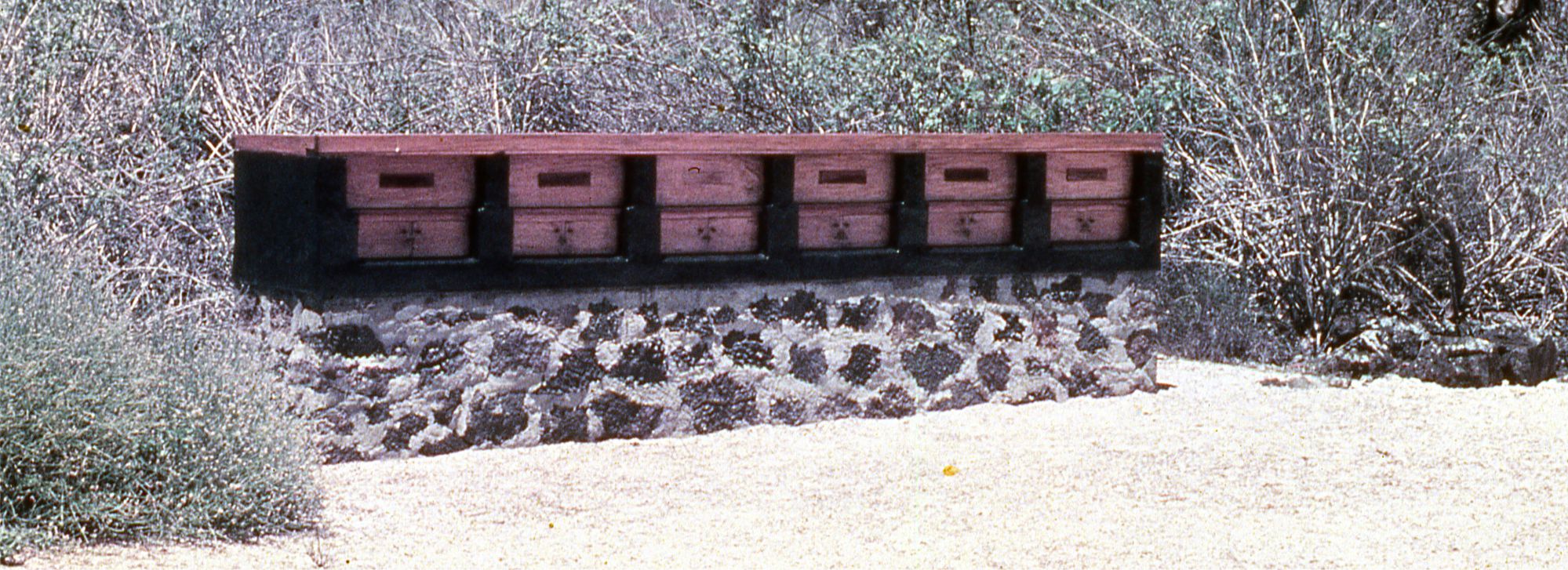The incubator at the CDRS
The image above comes from a slide that, according to the information written in its cardboard frame, was taken by Charles Darwin Research Station director Peter Kramer in 1970, and is kept in the audiovisual collection of the CDF Archive. The structure in the picture is the original incubator at the CDRS, whose remains still stand near the front door of the director's house, yards away from La Ratonera beach.
In his 2001 book The Galapagos: A brief history, Norwegian colonist Jacob P. Lundh provides basic information about this element.
From 1964 to 1970, the position of director of the CDRS was held by British zoologist Roger Perry, a UNESCO wildlife conservation specialist. With the construction of the CDRS buildings almost finished, he was able to devote a larger amount of time to research and scientific work than his predecessors. It was during this period that the Station manager, Edgar Pots, resigned his position, and was replaced by Rolf-Dieter Sievers, a young German settler. Almost at the same time, Tjitte de Vries was employed as a resident ecologist, while Miguel Castro was the conservation officer, a position he obtained in 1964, while David Snow was still director.
In 1965, Perry began an experiment that would define the future of the CDRS — and Galapagos' science history. He had the most recent eggs laid by giant tortoises in Pinzón Island brought to the Station, to be kept there. The population of tortoises in Pinzón was small, and they had problems reproducing because of the invasive black rats destroying their nests and killing their youngsters.
There was no available information about how to take care of Galapagos tortoises' eggs. However, under the guidance of Perry and thanks to the careful work of Miguel Castro and Anders Rambech, one of the earliest Norwegian colonists in Puerto Ayora, the experiment worked. This successful outcome encouraged Perry to extend the activity to other species in different islands, especially those which had no opportunity to reproduce in the wild.
In May, 1969, and with the financial support of the San Diego Zoological Society, Sievers designed and built the basic structures for incubating and hatching the eggs and rearing the small tortoises. Such structures were officially inaugurated in January, 1970. At the end of that year, the first batch of young tortoises, those coming from the eggs collected in Pinzón in 1965, were released on their original island.
All the information shared above was confirmed by Rolf Sievers himself — one of the oldest members of CDF still willing to share his memories and stories.
The incubators have appeared in countless pictures documenting the scientific process of conservation of giant tortoises designed and developed by the CDF. Nowadays, because of their meaning, they are a valuable, living part of the CDRS' and Galapagos' tangible heritage.
Kramer, Peter. [Incubator at the CDRS]. [Slide]. Santa Cruz : CDF, 1970. [N.d.] : col. ill. : 5 x 8 cm. DDC 986. Well preserved.
Subject categories: Conservation | Herpetology | History of CDF | History of Galapagos | History of science | Zoology
Keywords: Heritage | Memory | Reptiles | Slides
Time framework: 1970
Text & picture: Edgardo Civallero (edgardo.civallero@fcdarwin.org.ec).
Publication date: 1 May 2022
Last update: 1 May 2022
